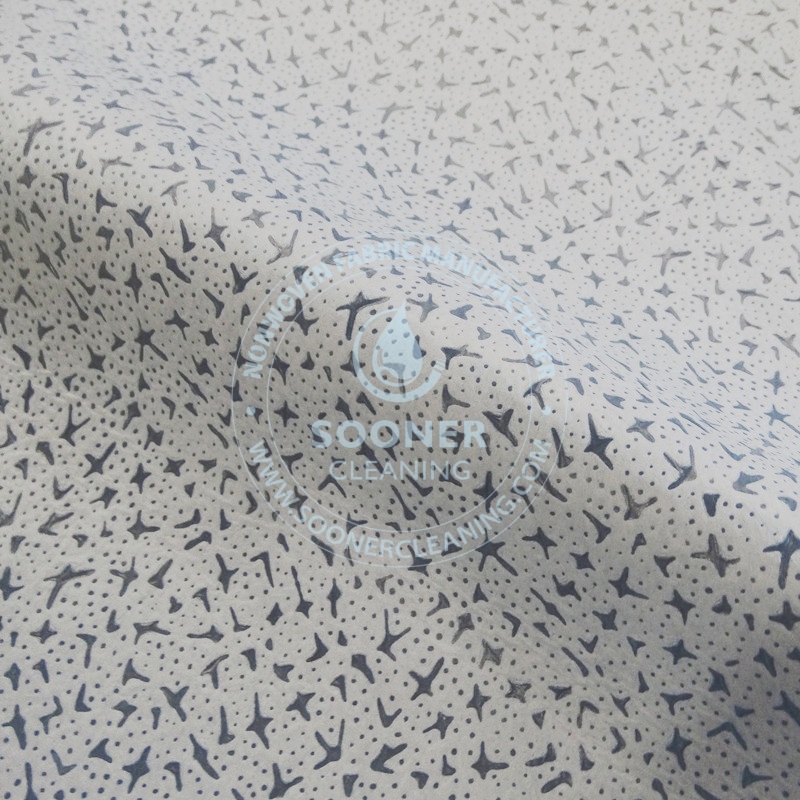Meltblown nonwoven fabric, as a high-performance material in the nonwoven fabric industry, has become an indispensable key material in modern industry and daily life due to its unique ultra-fine fibre structure and excellent filtration performance. This article will delve into the production secrets of meltblown nonwoven fabric, its wide-ranging applications, and how to select reliable manufacturers, providing you with valuable insights.
I. Meltblown Nonwoven Fabric: Core Process and Performance Advantages
The meltblown process is one of the core technologies in nonwoven fabric production. Its principle involves melting high-polymer pellets (such as polypropylene PP) at high temperatures, then extruding them through extremely fine spinnerets. Simultaneously, the fibers are drawn and cooled by high-speed, high-temperature air or nitrogen streams on both sides, forming ultra-fine fibers with diameters as small as 1–5 microns. These fibres randomly aggregate into a web on the receiving device, forming melt-blown non-woven fabric with uniform fibre distribution and fine pores through self-adhesion or subsequent reinforcement.
Core Performance Advantages:
Exceptional filtration performance: The three-dimensional mesh structure formed by the ultra-fine fibres effectively traps microscopic particles (PM2.5, bacteria, viruses, etc.), making it the preferred choice for medical masks (such as the core layer of N95/KN95 masks) and air purification filter materials.
Outstanding adsorption capacity: The large specific surface area endows it with strong oil and water absorption capabilities, widely applied in oil spill treatment, oil-absorbing cotton, and hygiene absorption materials.
Good breathability: While ensuring filtration/adsorption functionality, it maintains low breathing resistance, enhancing user comfort.
Uniformity and softness: The fibre mesh structure is uniform, with a relatively soft texture, making it suitable for skin-friendly products.
II. Irreplaceable Core Application Areas
Personal Protection (Core Applications):
Medical protective masks: As the core filtration layer (M layer), it is the key material determining the protective grade of masks (e.g., medical surgical masks, N95/KN95 masks), with massive demand and extremely stringent quality requirements.
Protective suits/isolation gowns: Provide liquid barrier and particle filtration protection.
Medical disinfection wraps/surgical drapes: Require sterility and bacterial barrier properties.
Air/Liquid Filtration:
Air purifier/fresh air system filters: Efficiently filter airborne pollutants such as dust, pollen, smoke, and microorganisms.
Automotive air conditioning filters: Improve indoor air quality.
Water filtration materials: Used for primary and intermediate filtration to remove impurities, rust, and colloids.
Melt-blown fabric filter bags: Industrial dust collection and treatment.
Sanitary Absorbent Materials:
Sanitary napkin/pantyliner/diaper surface layer or drainage layer: Rapidly guides liquids to maintain dryness.
Wet wipes: Used as a base material, requiring softness, strength, and good liquid-holding capacity.
Oil-absorbing materials: Used for industrial oil spills and mechanical oil stain cleaning (oil-absorbing cotton, oil-absorbing ropes, oil-absorbing rolls).
Thermal insulation filling materials: Such as clothing insulation cotton, sleeping bag filling layers.
Battery separator materials: A component of specific types of lithium-ion batteries (requires special processing).
Agricultural covering materials: Insulation, moisture retention, weed prevention.
Wiping cloths: Cleaning and wiping of high-precision instruments, eyewear, and electronic products.
III. Selecting high-quality meltblown fabric: Key considerations and manufacturer evaluation
With numerous melt-blown non-woven fabric manufacturers available, selecting the right one is crucial:
Core performance indicators:
Breathing resistance (pressure difference): The resistance to airflow through the material, directly affecting comfort; lower values are preferable (while maintaining filtration efficiency).
GSM (grams per square metre): The weight per square metre, influencing thickness, strength, filtration/adsorption capacity, and melt-blown non-woven fabric pricing.
Fibre fineness and uniformity: Determines the material's texture and basic performance.
Strength (tensile strength in longitudinal/transverse directions): Affects durability during processing and use.
Specific functional requirements: Such as hydrophilicity (for hygiene materials), hydrophobicity (for oil-absorbing materials), antibacterial properties, etc.
Manufacturer capabilities and qualifications:
Production Equipment: Advanced and stable meltblown non-woven fabric production lines are the foundation of quality. Pay attention to nozzle precision, airflow control, electrostatic charging equipment, etc.
Raw Material Control: Use high-quality, compliant polypropylene raw materials (such as high melt index PP) to ensure material safety and processing stability.
Quality System Certification: ISO 9001 quality management system certification is a basic requirement. Medical meltblown fabric manufacturers must possess relevant medical device qualifications.
Cost Factors:
The price of meltblown non-woven fabric is significantly influenced by raw material costs (PP price fluctuations), basis weight, performance requirements, order volume, and production process complexity. It is necessary to seek the optimal cost-performance solution while meeting performance requirements.
IV. Trend Outlook: Innovation and Sustainable Development
Functional Upgrades: Develop new meltblown filter materials with long-lasting antibacterial/antiviral properties, ultra-low resistance and high filtration efficiency, and biodegradability.
Environmental Sustainability: Research and promote melt-blown non-woven fabrics made from bio-based raw materials (such as PLA) and biodegradable technologies to reduce environmental impact.
Expanding Application Areas: Continue to explore applications in new energy (battery separators), high-end wiping materials, and new composite materials.
Precision-targeted industry needs, in-depth analysis of melt-blown non-woven fabric core processes and procurement strategies—request free samples now!


